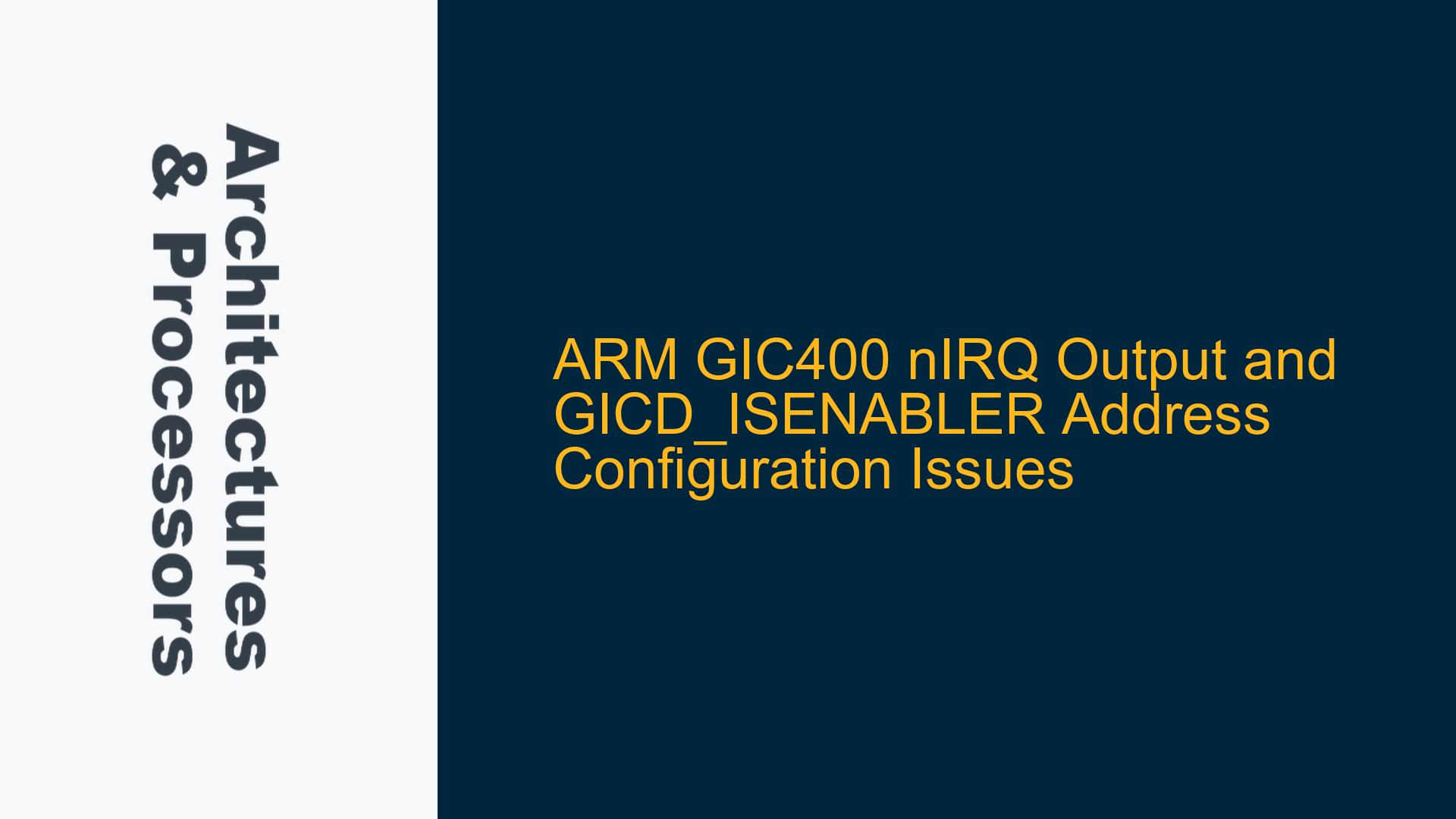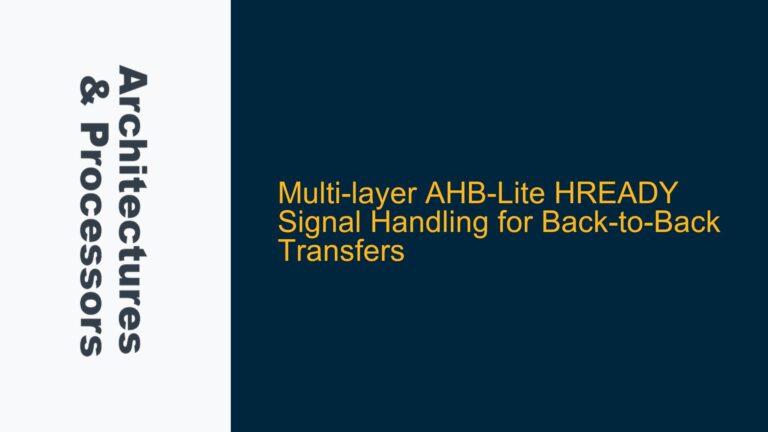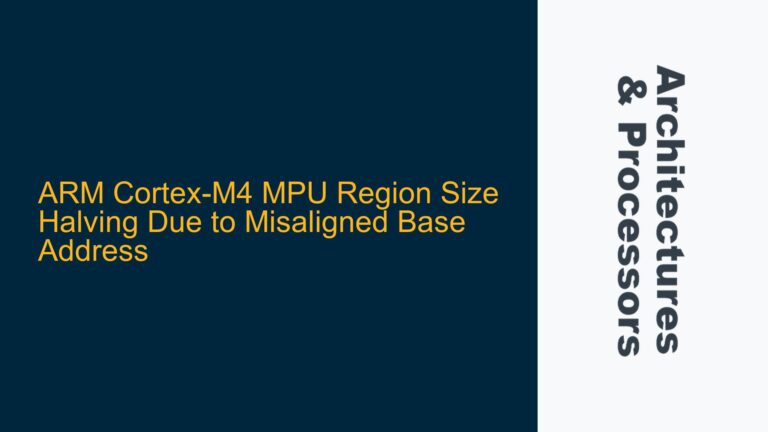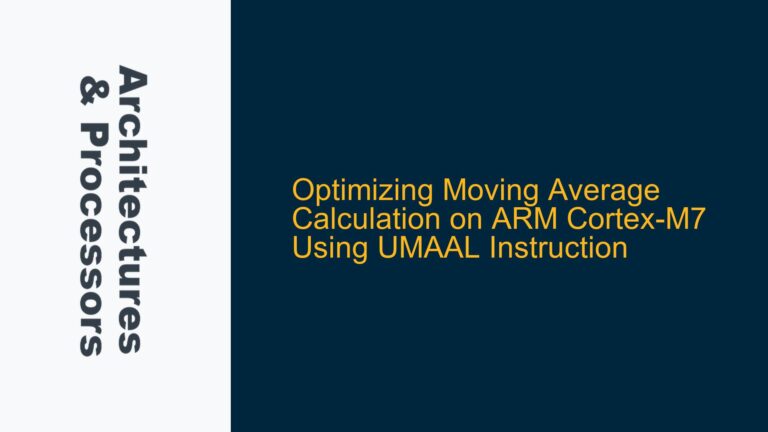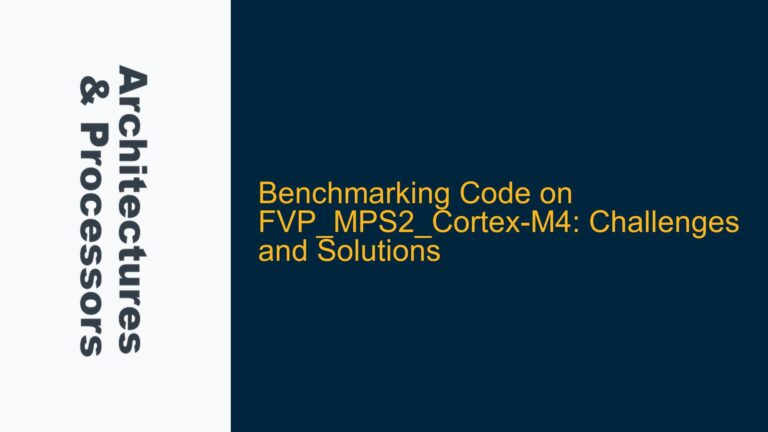GIC400 nIRQ Output Failure and GICD_ISENABLER Address Misconfiguration
The issue revolves around the incorrect configuration of the GICD_ISENABLER register address in the ARM GIC400, leading to the failure of nIRQ and nFIQ signal generation. The user has configured the GIC400 to handle two IRQ signals (IRQ0 and IRQ1) and expects the GIC400 to output nIRQ and nFIQ based on the level of these IRQ signals. However, the nFIQ signal is not being generated as expected. Additionally, there is confusion regarding the correct address for the GICD_ISENABLER register, specifically whether it should be 0x1100 or 0x1104 for interrupts ID0-ID31.
The GIC400 is a complex interrupt controller that manages interrupt sources and distributes them to the appropriate CPU interfaces. The GICD_ISENABLER register is used to enable specific interrupts, and its address calculation depends on the interrupt ID. The user’s confusion stems from the fact that the GIC400 has different address offsets for private interrupts (SGIs and PPIs) and shared peripheral interrupts (SPIs). Private interrupts (ID0-ID31) are banked, meaning they have separate registers for each CPU interface, while SPIs (ID32-ID1019) are global and shared across all CPUs.
The user’s configuration involves setting up the GICD_ICENABLER, GICD_ITARGETSR, GICD_CTLR, GICC_CTLR, and GICC_PMR registers correctly. However, the issue arises during the IRQ test phase when the GICD_ISENABLER register is accessed. The user observes that setting the GICD_ISENABLER address to 0x1100 does not produce the expected nIRQ output, while setting it to 0x1104 does. This discrepancy is due to the incorrect address calculation for the GICD_ISENABLER register when dealing with private interrupts (ID0-ID31).
Misalignment of GICD_ISENABLER Address and Interrupt ID Mapping
The root cause of the issue lies in the misalignment between the GICD_ISENABLER register address and the interrupt ID mapping. The GIC400 architecture specifies that private interrupts (ID0-ID31) are banked, meaning that each CPU interface has its own set of registers for these interrupts. The GICD_ISENABLER register is part of a group of registers that are banked for private interrupts. The address calculation for these registers depends on the interrupt ID and the CPU interface number.
For private interrupts (ID0-ID31), the GICD_ISENABLER register address is calculated as follows:
- Base address of the GIC Distributor (GICD_BASE)
- Offset for the GICD_ISENABLER register (0x100)
- Additional offset based on the interrupt ID and CPU interface number
The user’s configuration uses interrupt IDs 0 and 1, which are private interrupts (SGIs). The correct address for the GICD_ISENABLER register for these interrupts should be 0x1104, not 0x1100. The address 0x1100 corresponds to the GICD_CTLR register, which is used to enable the GIC Distributor and configure its operation mode. Accessing the wrong register address (0x1100) results in incorrect configuration and the failure to generate the nIRQ signal.
The confusion arises from the fact that the GICD_ISENABLER register is part of a group of registers that are banked for private interrupts. The address calculation for these registers is not straightforward and requires careful consideration of the interrupt ID and CPU interface number. The user’s initial assumption that the GICD_ISENABLER register address should be 0x1100 for interrupt ID0 is incorrect, as this address corresponds to the GICD_CTLR register.
Correcting GICD_ISENABLER Address Calculation and Ensuring Proper Interrupt Configuration
To resolve the issue, the user needs to correctly calculate the GICD_ISENABLER register address for private interrupts (ID0-ID31) and ensure that the interrupt configuration is properly set up. The following steps outline the correct approach to address the issue:
-
Correct Address Calculation for GICD_ISENABLER Register: The GICD_ISENABLER register address for private interrupts (ID0-ID31) should be calculated as follows:
- Base address of the GIC Distributor (GICD_BASE)
- Offset for the GICD_ISENABLER register (0x100)
- Additional offset based on the interrupt ID and CPU interface number
For interrupt ID0, the correct address is 0x1104, not 0x1100. Similarly, for interrupt ID1, the correct address is 0x1108. The user should update the address calculation in the IRQ test phase to use the correct addresses for the GICD_ISENABLER register.
-
Proper Configuration of GICD_CTLR and GICC_CTLR Registers: The user should ensure that the GICD_CTLR and GICC_CTLR registers are properly configured to enable the GIC Distributor and CPU interface. The GICD_CTLR register should be set to 0x03 to enable both Group 0 and Group 1 interrupts, while the GICC_CTLR register should be set to 0x0b to enable FIQ, Group 0, and Group 1 interrupts.
-
Verification of Interrupt Priority and Target Configuration: The user should verify that the interrupt priority and target configuration are correctly set up. The GICD_ITARGETSR register should be configured to route the interrupts to the appropriate CPU interface. The GICC_PMR register should be set to 0xff to allow all interrupt priorities.
-
Testing the Correct Configuration: After updating the address calculation and ensuring proper configuration, the user should re-run the IRQ test to verify that the nIRQ and nFIQ signals are generated correctly. The user should observe the nIRQ and nFIQ signals using a logic analyzer or simulation tool to confirm that the interrupts are being handled as expected.
-
Handling SPIs and Additional Interrupts: If the user needs to configure additional interrupts, such as SPIs (ID32-ID1019), they should follow the same approach for address calculation and configuration. The GICD_ISENABLER register address for SPIs is calculated differently, and the user should refer to the GIC400 architecture specification for the correct address offsets.
By following these steps, the user can resolve the issue with the GICD_ISENABLER register address misconfiguration and ensure that the nIRQ and nFIQ signals are generated correctly. The key is to carefully calculate the register addresses based on the interrupt ID and CPU interface number, and to verify the configuration using simulation or testing tools.
Detailed Explanation of GIC400 Register Addressing and Configuration
To further clarify the issue, let’s delve into the details of GIC400 register addressing and configuration. The GIC400 architecture is designed to handle a large number of interrupts, and its register addressing scheme is complex due to the need to support both private and shared interrupts.
GIC Distributor (GICD) Registers
The GIC Distributor (GICD) is responsible for managing interrupt sources and distributing them to the appropriate CPU interfaces. The GICD has several registers that are used to configure and control interrupts. These registers are divided into groups based on their functionality, and their addresses are calculated based on the interrupt ID and CPU interface number.
GICD_CTLR (GIC Distributor Control Register)
The GICD_CTLR register is used to enable the GIC Distributor and configure its operation mode. The address for this register is fixed at the base address of the GIC Distributor (GICD_BASE). The user has correctly set this register to 0x03 to enable both Group 0 and Group 1 interrupts.
GICD_ISENABLER (Interrupt Set-Enable Registers)
The GICD_ISENABLER registers are used to enable specific interrupts. These registers are banked for private interrupts (ID0-ID31) and are shared for SPIs (ID32-ID1019). The address calculation for these registers depends on the interrupt ID and CPU interface number.
For private interrupts (ID0-ID31), the GICD_ISENABLER register address is calculated as follows:
- Base address of the GIC Distributor (GICD_BASE)
- Offset for the GICD_ISENABLER register (0x100)
- Additional offset based on the interrupt ID and CPU interface number
For example, for interrupt ID0, the correct address is 0x1104, not 0x1100. Similarly, for interrupt ID1, the correct address is 0x1108.
For SPIs (ID32-ID1019), the GICD_ISENABLER register address is calculated as follows:
- Base address of the GIC Distributor (GICD_BASE)
- Offset for the GICD_ISENABLER register (0x100)
- Additional offset based on the interrupt ID
For example, for interrupt ID32, the correct address is 0x1100, and for interrupt ID33, the correct address is 0x1104.
GICD_ITARGETSR (Interrupt Processor Targets Registers)
The GICD_ITARGETSR registers are used to route interrupts to the appropriate CPU interfaces. These registers are also banked for private interrupts (ID0-ID31) and are shared for SPIs (ID32-ID1019). The address calculation for these registers is similar to that of the GICD_ISENABLER registers.
For private interrupts (ID0-ID31), the GICD_ITARGETSR register address is calculated as follows:
- Base address of the GIC Distributor (GICD_BASE)
- Offset for the GICD_ITARGETSR register (0x800)
- Additional offset based on the interrupt ID and CPU interface number
For example, for interrupt ID0, the correct address is 0x1800, and for interrupt ID1, the correct address is 0x1804.
For SPIs (ID32-ID1019), the GICD_ITARGETSR register address is calculated as follows:
- Base address of the GIC Distributor (GICD_BASE)
- Offset for the GICD_ITARGETSR register (0x800)
- Additional offset based on the interrupt ID
For example, for interrupt ID32, the correct address is 0x1800, and for interrupt ID33, the correct address is 0x1804.
GIC CPU Interface (GICC) Registers
The GIC CPU Interface (GICC) is responsible for handling interrupts for a specific CPU. The GICC has several registers that are used to configure and control interrupts for the CPU.
GICC_CTLR (GIC CPU Interface Control Register)
The GICC_CTLR register is used to enable the GIC CPU Interface and configure its operation mode. The address for this register is fixed at the base address of the GIC CPU Interface (GICC_BASE). The user has correctly set this register to 0x0b to enable FIQ, Group 0, and Group 1 interrupts.
GICC_PMR (Priority Mask Register)
The GICC_PMR register is used to set the priority threshold for interrupts. The address for this register is fixed at the base address of the GIC CPU Interface (GICC_BASE). The user has correctly set this register to 0xff to allow all interrupt priorities.
Summary of Correct Register Addresses
The following table summarizes the correct register addresses for the GICD_ISENABLER and GICD_ITARGETSR registers for private interrupts (ID0-ID31) and SPIs (ID32-ID1019):
| Interrupt ID | GICD_ISENABLER Address | GICD_ITARGETSR Address |
|---|---|---|
| ID0 | 0x1104 | 0x1800 |
| ID1 | 0x1108 | 0x1804 |
| ID32 | 0x1100 | 0x1800 |
| ID33 | 0x1104 | 0x1804 |
Conclusion
The issue with the GIC400 nIRQ output and GICD_ISENABLER address configuration can be resolved by correctly calculating the register addresses based on the interrupt ID and CPU interface number. The user should ensure that the GICD_ISENABLER register address is set to 0x1104 for interrupt ID0 and 0x1108 for interrupt ID1. Additionally, the user should verify that the GICD_CTLR, GICC_CTLR, and GICC_PMR registers are properly configured to enable the GIC Distributor and CPU interface. By following these steps, the user can ensure that the nIRQ and nFIQ signals are generated correctly and that the interrupts are handled as expected.
